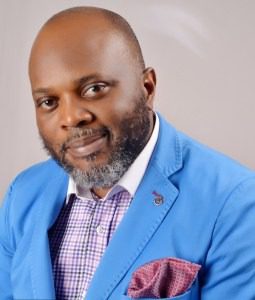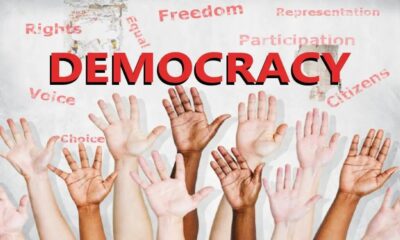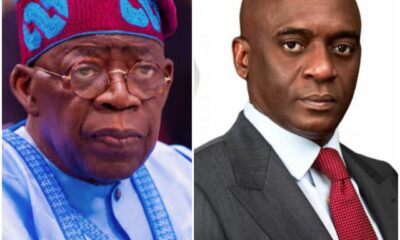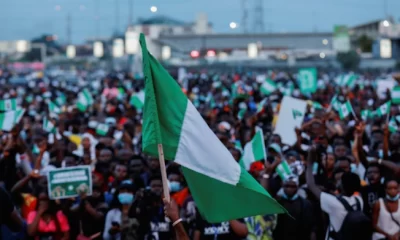Forgotten Dairies
A Short History of Restructuring In Nigeria -By ‘Tope Fasua


Tope Fasua
I wrote an article recently on the restructuring debacle. There were aspects I decided not to include in that article because of length, which I hope to now consider. There were also a few reactions which I believe a further analysis and research will help clear. My take is that geopolitical restructuring is a tricky subject, even though that is what many have in mind when talking of the subject. Even though going back to a regional system is a rather unrealistic proposal – because, for example, the National Assembly will not obliterate themselves and no state will want to be cancelled – perhaps millions of Nigerian intellectuals hold firmly to the idea that this is the way to go. Well, I intend to push my analysis a little bit further. My take remains that restructuring should be an ongoing process, shouldn’t necessarily be about causing a sea-change, and shouldn’t be left until a time of crisis. My take remains that we can achieve immediate progress by looking for quick wins, constitutional amendments of items that make absolutely no sense to be kept at the federal level, such as power generation, rail systems, prison systems and so on. I also believe that we should be gunning for a part-time legislature, we should be seeking to make our local governance stronger, and we could actually invert our revenue allocation formula to favour the lowest rung of government. In short, we must keep restructuring on the front burner always because it is about adjustments to make the life of our people much better.
These are some of my positions. But today, I want to posit another fact.
The fact is that the current clamour for restructuring is basically as a result of the failure of the Fourth Republic. In other words, I am saying that Nigeria has always restructured but has refused to do much in that respect in the past 19 years. And this is majorly why Nigerians are edgy, cantankerous and angrily pushing for something radical today. You cannot blame people. People get bored easily in the first place. But not only that. This current arrangement has been pinching a lot of people in the wrong places and so they have a right to complain and ask for something better. That is the intellectual ones amongst the people. For the rest down the food chain, many don’t know what has hit them. What they know is that the suffering is much and if anything is done about it, great. To that extent they have been zombified, and see nothing wrong in selling their future for a few loaves of bread, and packets of Indomie Noodles. One that though, they will come for those who perennially take advantage of them.
So what is the history of restructuring in Nigeria until today?
I will start from around 1957. At that point, the British was preparing to go and had offered Nigeria a free pass (independence) in that year, which we declined for another three years. I am interested in knowing how Nigeria has been tweaking its governance structure and systems, its revenue formulas, placating itchy ethnic groups or stabilising the nation via state creation, and embracing new systems of government as a whole as it ‘restructured’. I believe those are a major part of what restructuring is about. The rest is semantics. I will also state upfront that the idea that the ‘people’ are the ones that will state what structure they want to operate is quite problematic and utopian for several reasons. Even though we need to insert a provision for referenda into our constitution going forward, we can see how elections go in Nigeria and how easy it is to confuse our already impoverished people to vote in some certain directions. We also need to be careful, as most of our databases (including the electoral register and population censuses) are dodgy.
I will be looking at how Nigeria has restructured over time along the following important lines:
State Creation
Revenue Sharing
Systems of Government
Administrative Styles
Development Outcomes
These are paramount issues on the minds of our people, and important ways in which past governments have tinkered with the institution called Nigeria. Many people believe that the states structure should be done away with, while a good number believe we need even more states. Those who believe we need more states work from an ethnic angle. They complain about how their ‘tribe’ (or ‘race’) is big enough to have their own state and how the State in which they currently are, has not brought development to their people (because another dominant tribe is monopolising everything). The problem there is that almost every Nigerian state is unviable as it is. None of our states could be said to be improving at par with what obtains even in some North African countries. Or South Africa. Also this state creation argument is now a platform for fat-cats to carve their own fiefdoms. It has not worked for the average Nigerian. On the other hand, the problem with the argument of collapsing states is that its proponents talk about going back to regions. Some of them romanticise about the good old days. I doubt though if many people will love to go back to those days. Times have changed and people are now way too enlightened and globalised.
Revenue sharing is also a major contention. How much does a state get as derivation benefits for natural resources obtained in its territory? How much does the federal government get compared with others? Are local governments entitled to anything at all or should the states exercise absolute control at that level – in the name of ‘true federalism’ (a concept which does not exist)? These are the core issues. Truth is, Nigerian governments over time have dealt with these, and indeed, there is a provision that the allocation formula be tweaked every five years or so. Recently, the National Assembly had cause to question the legality of the current federal revenue allocation formula – relating to amounts paid into the consolidated fund. Section 32 of the 3rd Schedule of the 1999 Constitution requires that the National Assembly should approve that formula, and also gives a grace of at least five years for any allocation formula to run before being changed. What we are using now has been in effect since 1999, another pointer to the fact that the current clamour became necessary because of some sort of mental stasis that enveloped us since the return to democracy in 1999. We have been lucky though. We have had the longest stretch of civilian democracy so far. But as usual, there are a plethora of signs of mismanagement.
Nigeria’s Military Eras
I will try and present the remaining part of this article as summary.
First Militocracy (1966-79)
Major Kaduna Nzeogwu (1966). He announced a Supreme Council of the Revolution of the Nigerian Armed Forces before his misguided bloody military coup was terminated. No one knows how that would have gone.
Major General Johnson Aguiyi Ironsi (1966). It is not clear what he called his military cabinet but one ‘restructuring’ move he made was to abrogate Nigeria’s federal structure and promulgate a unitary (centralised) government. Many blame him for that today. But at least he did something by the way of restructuring.
General Yakubu Gowon (1966-1975). Inaugurated a Supreme Military Council. He also created 12 states as a way of breaking the back of the Biafran insurrection before it became a full blown war, by dividing the Eastern Region especially. Restructuring.
General Murtala Muhammad (1975-1976). This iconic leader headed a Federal Military Government which remained the Supreme Military Council. Apart from civil service reforms and some serious attempts at leadership by example in the anti-corruption front, Muhammad announced the movement of Nigeria’s capital to FCT Abuja. He also created nine more states.
General Olusegun Obasanjo (1976-1979). He famously handed power back to the civilians in 1979. Not before making Nigeria adopt an American-type Presidential government. Away with the parliamentary. This serious restructuring has saddled us with a very expensive type of government today.
The 1983-1999 Era
Major General Muhammadu Buhari (1983-1985) operated a Supreme Military Council. Tried to reduce the cost of governance and effect discipline.
Ibrahim Babangida (1985-1993). Changed his cabinet to the Armed Forces Ruling Council (AFRC). Appointed himself a Military President. Restructuring. He increased Nigerian States to 30. By now, state creation had become properly politicised. Military governments used the idea to gain legitimacy.
Sani Abacha (1993-1998). Was chairman Provisional Ruling Council (PRC). Approved six more states. This was the last restructuring around state creation in Nigeria till date. Very interesting that our states can only grow. No one has ever attempted to reduce the number of states. And once created, they take on lives of their own. Inextinguishable.
Abdulsalami Abubakar (1998-1999). He faithfully handed power back (again) to civilians. That is restructuring. We were back to democracy.
One interesting thing about the military era (no matter that they were illegal and unconstitutional) was how they fiddled with the structure. They created new acronyms and fancy names to motivate or captivate people and achieve some results. It is arguable if they were successful though. I recall vividly that the military sometimes believed that indigenes were better suited to govern states. At some other point they felt indigenes were biased and non-indigenes would achieve better results. Nothing was static.
The Civilian Eras
Pre-Republican Era
1957-1963: I made some very interesting discoveries pertaining to this era. Nigeria retained the British Monarch as titular head of state upon independence in 1960. Dr. Nnamdi Azikiwe became the first indigenous governor-general of Nigeria in November 1960. He was leader of National Council of Nigeria and the Cameroons (NCNC). The government was a coalition of the Action Group (AG), NCNC and the Northern People’s Congress (NPC). Tafawa Balewa had however been prime minister from 1957 (I didn’t know this until now. I thought he was ‘foisted’ on us in 1960 as a mere teacher – just as the media has educated us). Balewa was actually appointed by Sir James Robertson, the last colonial governor general. Sir Ahmadu Bello had become the Northern premier in 1954 but was expected to be prime minister in 1960 (kind of displacing Balewa). He simple left it for Balewa, who was deputy president of the NPC. Balewa became PM/chief minister in 1957 under a coalition government between NPC and NCNC.
Our Four Republics
First Republic: 1963-1966. We had our first Republican Constitution. Thw prime minister was Tafawa Balewa. Retained in 1960 and reelected in 1964. The first president was Dr. Nnamdi Azikiwe. Nigeria maintained the regions: the Western, Eastern and Northern
Second Republic: 1979-1983. The new constitution then jettisoned the Westminster style for American-style democracy. The idea was for the president to be a representation and have rulership of the entire country as against being a representative of a small part (as MPs are). The 1979 Constitution required political parties to have ‘Federal Character’, with offices in at least two-thirds of the country. Each state was to have one cabinet member (minister). That was serious restructuring.
Third Republic: 1993. General Ibrahim Badamosi Babangida (IBB)’s constitutional conference of 1989 established two parties – the Social Democratic Party (SDP) and the National Republican Convention (NRC). “A little to the left and right”. They were required to be nationalistic parties. No emphasis on regions or tribes. Civilian governors and legislators were elected in December 1991, and took office in January 1992. The presidential election was postponed till June 1993. Held and annulled. Chief M.K.O Abiola won. He has only been recognised now in 2018.
Fourth Republic: 1999 to date. This was based on the 1999 constitution, which drew largely from 1979 constitution (which was written by elected representatives). The new Constitution adopted on May 29, 1999. We have had four presidents in this Republic: Obasanjo, Yar’Adua, Jonathan and Buhari. We have also been static since then, in terms of ideas to tweak our ‘structure’. What is remarkable is that our Fourth Republic politics has become overly focused on personalities and not seen the development of our people’s minds and/or democracy as required. It is alleged that ‘criminals’ went into politics in 1999 when ‘clean’ people were cynical, and have remained there. No innovation has occured to affect people positively since, hence the series of agitations in the country. Nigeria has been afflicted with much violence and crime, and politicians are thriving at everyone’s expense.
Evolution of Nigeria’s Revenue Allocation Formula
In this part, I have relied heavily on the work of Lukpata (2013), as there is no need reinventing the wheel.
Professor Ojetunji Aboyade Commission (1978)
This was a six-member Committee charged with the responsibility of ensuring that each level of government of the Federation had adequate revenue to enable it discharged its responsibilities with due regard to the principles of:
(i) Equality of States
(ii) Derivation
(iii) Population
(iv) Even Development
(v) Geographical Considerations
(vi) National Interest
The Committee however, set aside all the criteria mentioned above and instead formulated five principles for the determination of statutory allocation to the states. Those prevailing principles were, as indicated below:
1. Equality of access to development opportunities. 0.25
2. National minimum standard for national integration. 0.22
3. Absorptive Capacity. 0.20
4. Independent Revenue. 0.18
5. Fiscal Efficiency. 0.15
Total Weight. 1.00
Furthermore, the Aboyade Committee recommended the sharing of the consolidated fund as follows:
Federal Government – 57 per cent
State Government – 30 per cent
Local Government – 10 per cent
Special Grants According – 3 per cent
Okigbo Presidential Commission (1980)
Federal Government – 55 per cent
State Government – 35 per cent
Local Government – 10 per cent
Revenue Allocation Under the IBB Regime in 1985–1989
The Babangida regime had to review the revenue allocation four times during its duration. From the inception of the regime in 1985 all through 1989, the formula of revenue allocation stood at:
Federal – 55 per cent
State – 32.5 per cent
Local – 10 per cent
Allocation to the oil mineral producing states, and general ecological problems stood at 1.5 per cent and 1 per cent respectively.
But in reality, the IBB regime grew the local government allocation from 10 per cent in 1988 to 20 per cent in 1993. State allocations however fell from 32.5 per cent to 24 per cent in the same period, while federal allocations grew marginally from 55 per cent to 58.2 per cent. That was restructuring.
Revenue Allocation Under Abacha Regime 1994–1998
Abacha regime adopted and maintained the formula bequeathed to it by the Babangida regime. This formula is presented below:
Federal Government – 48.5 per cent
State Government – 24 per cent
Local Government – 20 per cent
Special Fund – 7.5 per cent
Value added tax (VAT) was also introduced in 1996 to further broaden the government’s sources of funds. The formula adopted for the sharing of the VAT fund (vertically) since the 1997 fiscal years has been:
Federal Government – 35 per cent
State Government – 40 per cent
Local Government – 25 per cent
I don’t believe this has been tinkered with since then. Again, we have stopped thinking since 1999. This is the same fate that befell our Production Sharing Contracts in the oil sector, which have not been reviewed with any effect since Abacha signed off on them in 1993.
Revenue Allocation (2000–2010)
The current vertical allocation formula which is based on Presidential Executive order is as follows:
Federal Government – 52.68 per cent
State Government – 26.72 per cent
Local Government – 20.60 per cent
While the horizontal allocation formula which captures factors/principles and percentage is as follows:
Equality – 40 per cent
Population – 30 per cent
Landmass/Terrain – 10 per cent
Internally Generated Revenue – 10 per cent
Social Development Factor – 10 per cent
I came across information that the RMAFC (Revenue Mobilisation and Fiscal Commission) proposed 41.3 per cent for federal, 31 per cent for states and 16 per cent for local governments for federal allocations. Apparently this ended up as a mere proposal.
Again not much real changes have been effected since 1999. Our current politicians rather settled in and will do anything to halt any change that will remove the carpet from their feet. Yet, life would have been easier for all of us if they were dynamic.
Derivation Principle
Yes, I made a quick dash in this direction. I discovered, working with a research published by Dele Babalola (2014), titled “The Underdevelopment of the Niger Delta Region: Who is to Blame?”, that between 1946 through to 1953, the derivation principle was 50 per cent – meaning that regions where resources where mined got half the advantage. Between 1953 and 1958, this became 100 per cent, before it was reverted to 50 per cent. The Gowon Government reduced derivation to 30 per cent in 1970. The Aboyade committee recommended 25 per cent in 1977, but this reduced to 5 per cent under Shagari in 1981. The first Buhari government dropped this further to about 2 per cent in 1984, while Babangida increased it to about 3 per cent in 1992. Since the Obasanjo regime increased derivation to 13 per cent in 1999, subsequent governments have not done anything in this area.
Again, we simply went to sleep since 1999. Restructuring should be a constant affair.
State Creation
1914 – Northern and Southern protectorates/provinces and Lagos Colony.
1954 – The entire area became autonomous Federation of Nigeria.
1960 – 1967 – Three Regions – Western, Northern, Eastern.
1967 – 1976 – Twelve States: North Western, Kaduna, Kano, North Eastern, Kwara, Benue-Plateau, Western, East-Central, Lagos, Mid-Western, Cross River, Rivers (chiefly to slow down Ojukwu and ensure he didn’t get the oil-rich regions),
1976 – 1987 – Oyo, Ondo, Cross-River, Rivers, Niger, Sokoto, Borno, Kano, Kaduna, Bendel, Ogun, Lagos, Kwara, Gongola, Bauchi, Imo, Anambra, Plateau, Benue.
1987 – 1991 – Akwa Ibom State was carved out of Cross River; Katsina from Kaduna.
1991 – 1996 – Adamawa and Taraba, Enugu from Anambra, Edo and Delta from Bendel, Yobe from Borno, Kebbi from Sokoto, Osun from Oyo.
1996 – date – Abacha created Ebonyi from Abia and Enugu State, Bayelsa from Rivers, Nasarawa from Plateau, Zamfara from Sokoto, Gombe from Bauchi, Ekiti from Ondo. 36 states were achieved at that point.
State creation became a political game and for illegal governments to gain legitimacy. At the Goodluck Jonathan 2014 national conference 18 more states were demanded. States have become an instrument of oppression of local elites. Our local governments and rural areas have regressed into further underdevelopment over time.
A Word On the Seeming Permanence of APC/PDP
When I moved for the putting together of a new political party, the Abundant Nigeria Renewal Party (ANRP), one of the driving reasons was the need for younger people like me to be able to put our political ideas and structures together. Usually there will be marked generational differences – for good or ill – between structures put together by people of different generations, I suppose. For one, technology is improving and changing the world and we must change with the times, or be stuck in an unenviable time warp, regress and go extinct. Around the same time, I had cause to trace back the histories of our two ‘major’ political parties (which have become major not because of sound ideology, internal funding structures, mass subscriptions or even mobilisation reach-outs, but because the people running them have no conscience and dip hands into state resources). The APC can be traced to the Action Group (AG), which morphed into the UPN, the SDP, and later the AD and ACN before going into a coalition with the CPC to form the APC. The problem is that politicians have now criss-crossed so often that the founders of the AG will cringe if they could see some of the people parading on their legacies. In the same vein, the PDP could be traced back to the conservative NPC and NCNC, which became NPN and NRC.
I am adding this here to point out that these parties are not written into the Nigerian Constitution and as such Nigeria must either begin to look beyond them or look for how they can be forced to do the right thing – develop some ideologies, stop stealing from the public, settle down to governance and so on. A very important aspect of political restructuring is therefore in the hands of the Nigerian people; we cannot be thinking of other type of restructuring – which is like doing a new thing or moving the furniture around – when we now seem unable to think of any other political arrangement beyond PDP and APC. The recent Ekiti election tells a story. Some of us are however adamant that we shall remain and keep doing the right thing until something gives. Advocates and proponents of restructuring must know that they have not kept their own side of the bargain by not causing a restructuring of political parties in a way that empowers those with ideologies. Our political system is as corrupt, static, dysfunctional and moribund as the economic system, which the lack of restructuring has foisted on us.
Conclusion
There you have it. We must wake up in this era. We have taken too much for granted already. They say change is the only constant thing in life. But what choices do we make going forward? We need less states, not more, for example – I believe. But how do we achieve that? Or maybe we retain the states we have already but ensure that we track the money they spend and they reduce their excesses. We need more spending at very local levels to cause a reversal of the rural-urban drift, lift our people out of mass ignorance, joblessness, disease and poverty, and unleash productivity at that level. We just need more money to get to the most vulnerable in a sustainable fashion. There are many jobs in the public sector that have not been created because our leaders are more concerned with their own pleasure and safety, and don’t understand that the people MUST BE SERVED by government and that a minimum standard of living must be ensured for all citizens – for starters. Restructuring is the standard way of ensuring that no citizen of Nigeria is being cheated for too long. The restructuring we need today is such as prunes the expenditure of governments on appurtenances and luxuries of office and releases the same funds for the hapless people. We hear these days of government organisations like PENCOM, CBN, NERC, NNPC, FIRS, SEC etc., where their executives grant themselves huge payouts in and out of service, while the majority of Nigerians pine away. We need restructuring that will unleash productivity and efficiency so that we can somehow begin to try and catch up with the rest of Africa… that is the basic minimum.
As it pertains to geopolitical agitations, what is required is honest, intelligent analysis on the feasibility of proposed approaches. A cursory look at even existing states will show serious fissions and internal conflicts all over the place. Casually assuming that we could merge hundreds of disparate peoples into new ‘regions’ at this time, is an irresponsible assumption that many people have made in different misguided conferences and symposia. In States like Plateau, Kogi, Benue, Taraba, Adamawa, Borno, Gombe, Kwara, Lagos, Ogun, Ondo, Cross River, Edo, Rivers, Delta, Bayelsa, Nasarawa, and just about everywhere you look, there are internal ethnic conflicts of different intensities. Some of those ethnic groupings in those states are hoping for their own states. Attempting to merge them into regions will create new explosions. There is also the complaint about Nigeria’s politically-manipulated populations, and indiscriminate or arbitrary creation of local governments by some states in order to get undue advantage in revenue allocation. What do we do about this as a matter of restructuring? I would suggest that primary and secondary school student enrollment may be a better measure of real population in a state and will encourage governors to ensure the children get basic education at least. And these can be more easily verified. We could also use the number of health centres or any other indices that ensure the governors are not sitting in the state house just feeling like warlords. Whatever works.
Long and short, our approach to restructuring must be clear-headed, people-oriented, and driven by a desire for development and progress.
References
Babalola, D. (2014). The underdevelopment of Nigeria’s Niger Delta Region; Who is to blame? International Journal of Sustainable Development. Retrieved from
https://www.researchgate.net/figure/Derivation-and-Revenue-Allocation-1946-99_fig1_262564967
Lukpata, V (2013). Revenue Allocation Formulae in Nigeria; A Continuous Search. International Journal of public Administration and Management Research. Retrieved from:http://rcmss.com/2013/1ijpamr/Revenue%20Allocation%20Formulae%20in%20Nigeria_%20A%20Continuous%20Search.pdf
‘Tope Fasua, an Economist, author, blogger and entrepreneur, can be reached through topsyfash@yahoo.com.



















